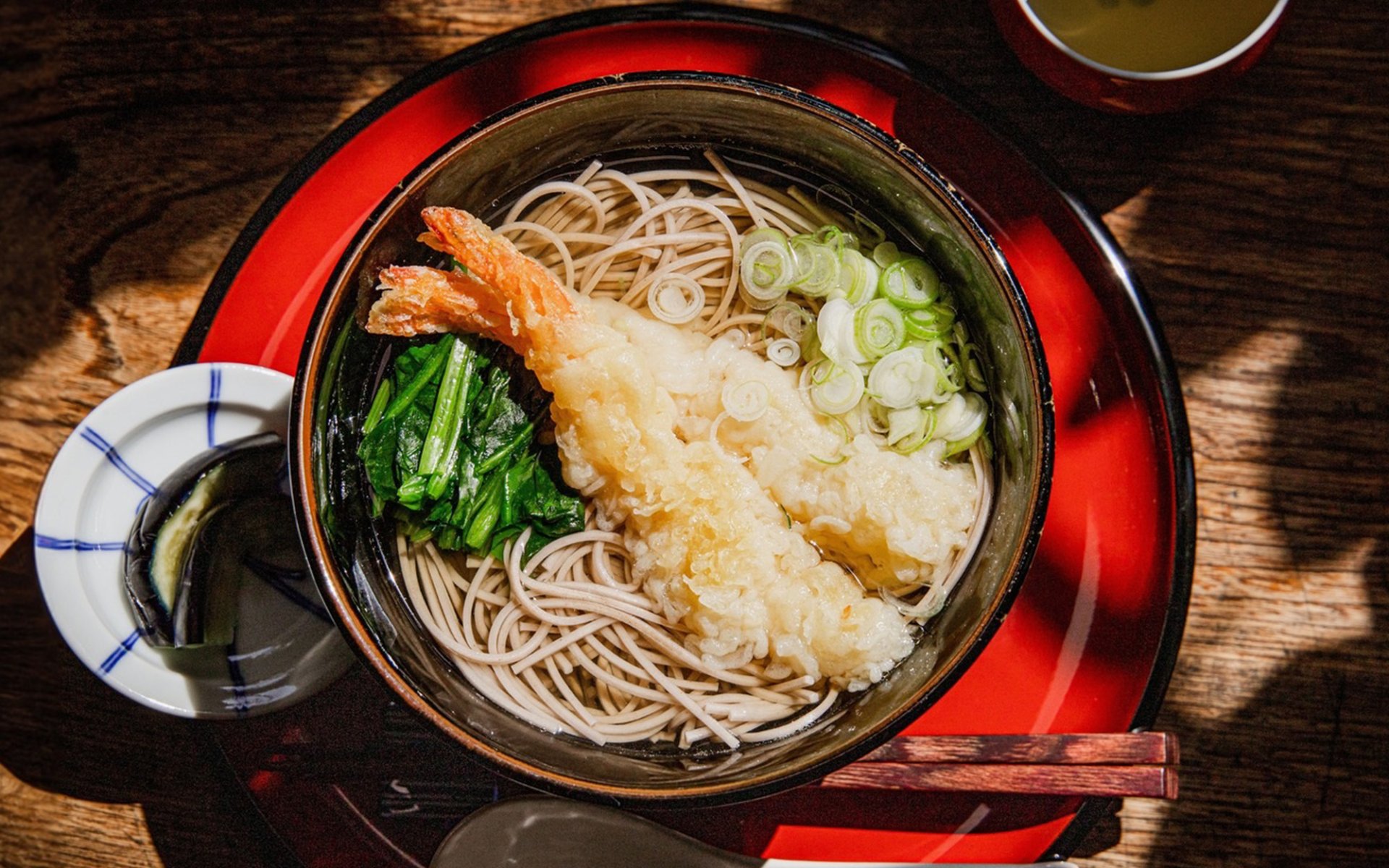Toshikoshi Soba

On New Year's Eve, Japanese people have a cherished tradition passed down through generations: consuming Toshikoshi Soba. It is believed that eating these soba noodles as the year turns brings longevity, much like the length of the noodles, and helps problems and obstacles resolve easily. Today, Rimping Supermarket invites you to delve into the story of these lucky noodles.
The Meaning of Year-Crossing Noodles
Toshikoshi Soba (年越しそば) directly translates to year-crossing noodles in Japanese, signifying the transition from the old year to the new. It's a type of soba noodle commonly eaten by Japanese people before midnight on New Year's Eve (December 31st). It is often served with auspicious toppings, each carrying special meaning:
- Shrimp: Symbolizes longevity.
- Grated daikon radish: Helps to expel evil spirits and sever bad relationships.
- Fried tofu: A symbol of business prosperity and good fortune.
- Kamaboko (Japanese fish cake): Red symbolizes a talisman, while white represents purity.
- Green onions: Symbolize hard work throughout the year.
- Egg: A symbol of good luck, fortune, and prosperity.
Origins and Legends
The origin of Toshikoshi Soba dates back several centuries, rooted in Japanese folklore. Records suggest that eating soba on New Year's Eve began during the Edo period (1603-1868). During this time, soba noodles were often served at temples and shrines during New Year's celebrations to bring good luck and prosperity to the people.
Another legend associated with Toshikoshi Soba is linked to Buddhism. Buckwheat, the main ingredient in soba noodles, is believed to have been introduced to Japan around the 9th century by Buddhist monks, who considered the plant sacred. Over time, soba became associated with spiritual cleansing. Therefore, eating Toshikoshi Soba on New Year's Eve became a symbol of purifying oneself from the impurities of the past year, allowing for a fresh start.
Regional Variations and Shared Celebration
Furthermore, the preparation and consumption of Toshikoshi Soba vary across different regions in Japan, each with its unique customs and preferences. For example, some areas typically serve it in hot dashi broth, while others prefer it cold with a tsuyu dipping sauce, showcasing the diversity of Japanese culinary culture.
In modern Japan, Toshikoshi Soba remains a culturally revered culinary tradition. Families gather to make soba noodles by hand and enjoy Toshikoshi Soba together, making this tradition a symbol of warmth, happiness, and unity. It is a time for family reunions and fostering strong bonds on an important day.
Global Spread of the Tradition
Over time, the popularity of Toshikoshi Soba has spread far beyond Japan's borders, becoming known in many countries. This is because Japanese people living in various parts of the world have carried this culture and tradition with them, leading to the popular consumption of Toshikoshi Soba on New Year's Eve in numerous countries, making it one of the interesting symbols of Japanese New Year culture.


